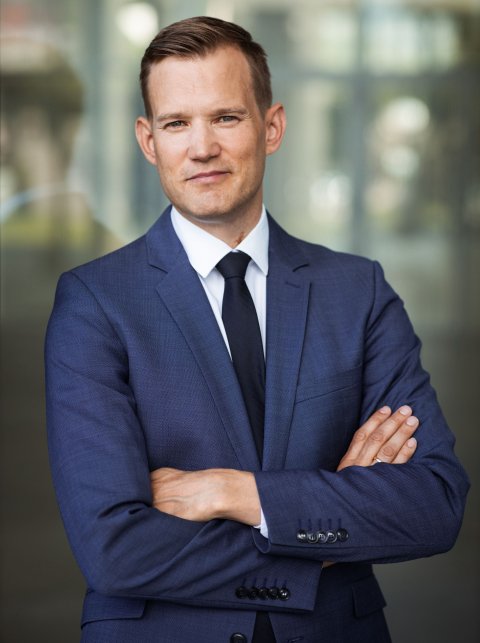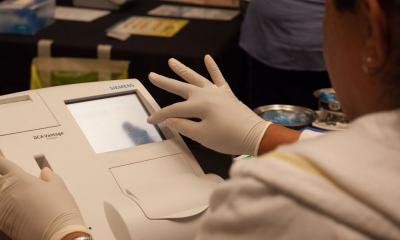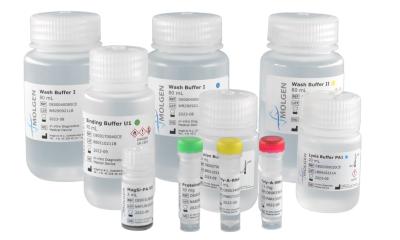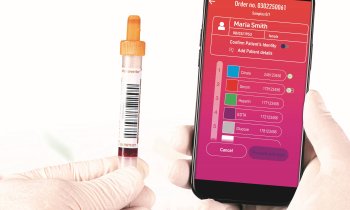Article • Diagnosing SARS-CoV-2
The arsenal: Molecular (PCR), antigen and antibody testing
Germany’s lack of diagnostic ability led to significantly underestimation of its own as well as global Covid-19 infection levels during the first wave. Now, however, improved testing and diagnosis of the condition more realistically reveal nearer 20,000 new cases a day across the country, according to Professor Hendrik Streeck, one of the country’s leading virologists.
Report: Mark Nicholls

Speaking at a virtual LabMed session held by Medica 2020, which explored ‘diagnostic aspects and immunity during the Covid-19 pandemic’, he outlined current trends and challenges in SARS-CoV-2 testing.
Streeck, who directs the Institute of Virology at University Hospital, Bonn, began by looking at the incidence and development of Covid-19 in Germany and its behaviour one year after the first diagnosed case in China. Figures from Germany’s first wave were up to 6,000 infections a day in March, before levelling off in the summer and having a subsequent rise to 23,000 cases a day and now 17,000 indicating a "shutdown light". ‘We should not underestimate the first wave of infection in March,’ he reflected. ‘Three different publications estimated that infection levels back in March ranged from 15,000 up to 62,000 infections per day at that time. When only 6,000 infections a day was measured, what actually happened was a big underestimation of infection levels due to the lack of diagnostics ability. With the second wave,’ he continued, ‘we are now seeing a pattern well-known to those who run diagnostics for coronaviruses.’
Recommended article

Article • Covid-19
Coronavirus update
Years after the first outbreak and spread of coronavirus Sars-CoV-2, its impact can still be felt in everyday life. Keep up-to-date with the latest research news, political developments, and background information on Covid-19.
Streeck compared that to the seasonality of coronaviruses in general – and the four endemic coronavirus that cause flu-like symptoms, but not including SARS-CoV-2. Data covering 2010-2020 shows a similar pattern, with a reduction in cases in March and April, but a steep rise in Autumn. ‘This very typical pattern explains why we are seeing the really large increase in new infections.’
The key aspect now is the use of diagnostics and the three techniques comprised of molecular testing (PCR) as the gold standard, with extremely high sensitivity and specificity; the antigen test with the advantage of rapid turnaround of 10-15 minutes, but with lower sensitivity, and, antibody testing, which cannot detect acute SARS-CoV-2 infection but, rather, whether someone had already had an infection.
With 1.6m PCR tests a week now being conducted in Germany, Streeck said case numbers from March and April cannot be compared to present figures, especially with the recent change in the country’s diagnostic guidelines that only symptomatic people should be tested.
We are now hoping that the antigen tests will give us the ability to test quickly and filter those out that are still infectious and can infect other individuals
Hendrik Streeck
He also detailed the issue with molecular tests and antigen tests in how best to identify levels of infectiousness at different stages of an individual having the virus. ‘We are now hoping that the antigen tests will give us the ability to test quickly and filter those out that are still infectious and can infect other individuals,’ he added.
During the Medica session, Professor Jonathan Schmid-Burgk from the University Clinic, Bonn, spoke on SARS-CoV-2 high throughput testing. Dr Verena Haselmann from the University Medicine Mannheim discussed external ring trials for SARS-CoV-2 antibodies, and Dr Alexander von Meyer, from Munich University Hospital, presented the diagnostic performance of PCR and antibody assays in an outbreak scenario.
Profile:
Professor Hendrik Streeck. Director of the Institute of Virology at University Hospital, Bonn, co-directs HIV&AIDS at the same hospital and is a consultant for the Cellular Immunology Section of the US Military HIV Research Program. The professor is also a consultant for the Corona Task Force of North-Rhine-Westphalian Government. His research interests lie in HIV epidemiology and vaccination strategies, retroviral infections, immunology and SARS-CoV-2 epidemiology.
26.11.2020











